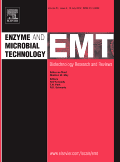
BIOTECHNOLOGY AND BIOENGINEERING
Scope & Guideline
Bridging Knowledge and Innovation in Bioengineering
Introduction
Aims and Scopes
- Bioprocess Engineering:
Research in this area focuses on optimizing bioprocesses for the production of biological products, including monoclonal antibodies, enzymes, and vaccines. Methodologies often involve the use of advanced bioreactor designs, continuous processing techniques, and real-time monitoring systems. - Synthetic Biology and Genetic Engineering:
This scope includes the design and engineering of biological systems for improved production of pharmaceuticals, biofuels, and other value-added compounds. Techniques such as CRISPR/Cas9 gene editing and metabolic pathway engineering are commonly employed. - Cell Culture Technology:
Focusing on the development and optimization of cell culture systems, this area explores the cultivation of mammalian, microbial, and plant cells for various applications, including drug discovery, tissue engineering, and regenerative medicine. - Biomaterials and Tissue Engineering:
Research in this domain investigates the development of novel biomaterials for applications in tissue engineering, regenerative medicine, and drug delivery. This includes the fabrication of scaffolds using 3D printing and bioprinting technologies. - Downstream Processing:
This area addresses the challenges associated with the recovery and purification of biological products from complex mixtures, emphasizing innovative separation techniques and process intensification strategies. - Bioinformatics and Computational Biology:
Utilizing computational tools and modeling approaches, this scope aims to understand biological processes and optimize bioprocessing parameters through data-driven insights.
Trending and Emerging
- Microbial Production Systems:
Research focusing on the optimization of microbial platforms for the production of high-value compounds has surged. This includes advancements in metabolic engineering and synthetic biology to enhance yield and efficiency. - Advanced Cell Culture Techniques:
Emerging methods such as 3D cell cultures, organ-on-a-chip technologies, and microfluidic systems have gained significant attention for their ability to better mimic in vivo environments, leading to more relevant biological insights. - Real-Time Process Monitoring and Control:
The integration of real-time monitoring technologies, such as Raman spectroscopy and machine learning, for bioprocess optimization has become increasingly prominent as researchers seek to enhance efficiency and product quality. - Sustainable Bioprocessing:
There is a growing emphasis on sustainability in bioprocessing, with research exploring renewable resources, waste valorization, and the development of eco-friendly biomanufacturing practices. - Nanobiotechnology:
This emerging area explores the application of nanotechnology in biotechnology, including drug delivery systems, biosensors, and the development of nanomaterials for various biomedical applications.
Declining or Waning
- Traditional Fermentation Techniques:
Research focused on conventional fermentation processes has decreased as newer, more efficient approaches such as continuous and integrated bioprocessing gain traction. The shift towards these modern methodologies highlights the need for improved scalability and efficiency. - Plant Biotechnology:
Although plant-based biotechnologies have historically been significant, recent trends indicate a waning interest in this area, possibly due to the rise of microbial and mammalian systems that offer higher yields and faster production timelines. - Basic Biochemical Pathways Analysis:
There has been a noticeable decline in studies focusing solely on the characterization of basic metabolic pathways, as newer, multi-omics approaches provide more comprehensive insights into cellular functions and metabolic engineering.
Similar Journals

Microbial Cell Factories
Driving Excellence in Microbial Biotechnology ResearchMicrobial Cell Factories is a premier peer-reviewed journal dedicated to the field of applied microbiology and biotechnology, published by BMC in the United Kingdom since 2002. With an impressive impact factor, this journal has consistently ranked within the Q1 category across multiple disciplines, including Applied Microbiology, Bioengineering, and Biotechnology, showcasing its significance in the scientific community. The journal’s commitment to open access ensures that innovative research is freely available to researchers, professionals, and students worldwide, fostering collaboration and knowledge dissemination. With a strong presence in Scopus rankings, Microbial Cell Factories is recognized for its contributions to advancing the understanding and application of microbial processes in production systems, making it an essential resource for those involved in the microbiological and biotechnological fields.

AIMS Bioengineering
Innovating Solutions Through Interdisciplinary ResearchAIMS Bioengineering, published by the American Institute of Mathematical Sciences (AIMS), is an esteemed open-access journal dedicated to advancing knowledge in the interdisciplinary field of bioengineering. With the ISSN 2375-1495, this journal has been providing a platform for the rapid dissemination of high-quality research since its establishment in 2014. AIMS Bioengineering covers a wide range of topics, including but not limited to, biomaterials, computational biology, and bioinformatics, making it an essential resource for researchers, professionals, and students alike. Although the H-index and specific category quartiles are not currently available, the journal's commitment to open access ensures that cutting-edge findings are accessible to a global audience, fostering collaboration and innovation in bioengineering. With its rigorous peer-review process and dedication to scholarly excellence, AIMS Bioengineering continues to play a pivotal role in shaping the future of the bioengineering landscape.

BIOTECHNOLOGY LETTERS
Unveiling Breakthroughs in Biotechnology and BeyondBIOTECHNOLOGY LETTERS is a prestigious peer-reviewed journal that has been at the forefront of biotechnology research since its inception in 1979. Published by Springer, this esteemed journal serves as a vital platform for disseminating cutting-edge research in the fields of applied microbiology, bioengineering, and biotechnology, with a focus on innovative methodologies and technologies. With an impact factor reflecting its critical contribution to the discipline, BIOTECHNOLOGY LETTERS resides in the Q2 and Q3 tiers of various scientific categories, placing it among the notable journals in the biotechnological landscape. Although it offers traditional access options and does not feature open access, the journal embraces a global readership, encouraging submissions from researchers, professionals, and students eager to explore the dynamic advancements in biotechnology. Situated in the Netherlands, it continues to shape the future of the field through relevant, impactful research that addresses contemporary challenges and opportunities in medicine and beyond.

ENZYME AND MICROBIAL TECHNOLOGY
Transforming Science Through Enzymatic and Microbial InsightsENZYME AND MICROBIAL TECHNOLOGY, a premier journal published by Elsevier Science Inc, serves as a pivotal platform for researchers and professionals dedicated to exploring the dynamic intersections of microbiology, biochemistry, and bioengineering. With a rich publication history dating back to 1979 and converging until 2024, this journal has established itself within the Q2 quartile rankings across multiple categories, including Applied Microbiology and Biotechnology, Biochemistry, Bioengineering, and Biotechnology, highlighting its influential role in advancing scientific discourse. It holds impressive Scopus rankings, where it is recognized in the 79th percentile for Applied Microbiology and Biotechnology and ranks favorably in related fields, making it a valuable resource for academic and industrial researchers looking to stay abreast of the latest developments. Although it does not currently offer Open Access options, ENZYME AND MICROBIAL TECHNOLOGY remains an essential read for anyone invested in the biotechnological applications of enzymes and microorganisms.

Stem Cell Research & Therapy
Catalyzing Discoveries in Molecular MedicineStem Cell Research & Therapy is an esteemed international journal published by BMC, specializing in the rapidly advancing fields of stem cell research and regenerative therapies. Since its inception in 2010, the journal has embraced an Open Access model, ensuring that vital research is readily accessible to a global audience. With a significant impact in the scientific community, it holds Q1 quartile rankings in prestigious categories such as Biochemistry, Genetics and Molecular Biology, Cell Biology, and Molecular Medicine, highlighting its critical role in promoting groundbreaking research. The journal’s high Scopus rankings—placing it in the top echelons of its fields—reflect its commitment to publishing high-quality, peer-reviewed studies that advance our understanding of stem cell biology and therapeutic applications. Aimed at researchers, healthcare professionals, and students alike, Stem Cell Research & Therapy is an indispensable resource for those dedicated to the exploration and innovation within this transformative area of science.

Research Journal of Biotechnology
Exploring the frontiers of biotechnology research.Research Journal of Biotechnology is a premier publication dedicated to advancing the field of biotechnology through the dissemination of impactful research articles. Published by Research Journal Biotechnology in India, this journal operates under an Open Access model, facilitating unrestricted access to high-quality research for researchers, professionals, and students worldwide. With an ISSN of 2278-4535 and an E-ISSN of 2278-4535, the journal aims to serve as a comprehensive platform for innovative studies in Applied Microbiology and Biotechnology, Bioengineering, and Biotechnology. Despite its current Q4 quartile ranking in these categories, the journal aspires to extend its influence and visibility in the academic community, aiming for greater impact in the future. The journal features research articles that span a wide array of topics in biotechnology, fostering a collaborative and knowledge-rich environment for national and international scholars. We invite you to explore, contribute to, and engage with the expanding landscape of biotechnological research through the Research Journal of Biotechnology.

BIOTECHNOLOGY ADVANCES
Connecting Researchers to the Heart of BiotechnologyBIOTECHNOLOGY ADVANCES is a premier, peer-reviewed journal published by PERGAMON-ELSEVIER SCIENCE LTD, dedicated to advancing knowledge in the rapidly evolving fields of biotechnology and bioengineering. With an ISSN of 0734-9750 and an E-ISSN of 1873-1899, this esteemed journal covers a wide spectrum of topics relevant to applied microbiology, molecular biology, and biochemical innovation. Recognized for its academic rigor, it holds a distinguished position in the top quartile (Q1) in multiple categories, including Applied Microbiology and Biotechnology, Bioengineering, and Biotechnology, further evidenced by its high rankings in Scopus, where it ranks #3/127 in Applied Microbiology and Biotechnology and #7/311 in Biotechnology. Researchers and professionals in the field value the journal not only for its comprehensive coverage of cutting-edge research but also for its commitment to disseminating critical findings and fostering collaboration. While BIOTECHNOLOGY ADVANCES currently operates under a subscription model, its potential impact on future innovations in biotechnology cannot be overstated, making it an essential resource for anyone interested in the forefront of biotechnological advancements.

JOURNAL OF INDUSTRIAL MICROBIOLOGY & BIOTECHNOLOGY
Pioneering Discoveries in Applied Microbiology and BioengineeringJOURNAL OF INDUSTRIAL MICROBIOLOGY & BIOTECHNOLOGY, published by Oxford University Press, is a vital resource for researchers and professionals actively engaged in the fields of applied microbiology, biotechnology, and bioengineering. With an ISSN of 1367-5435 and E-ISSN of 1476-5535, this journal has established itself as a leading platform for disseminating innovative research findings and advancing knowledge in industrial microbiology since its inception in 1996. As of 2023, it is classified in the Q2 quartile across multiple categories including Applied Microbiology and Biotechnology, Bioengineering, and Medicine, underscoring its significance in the academic community. Notably, it ranks 26th of 127 in Applied Microbiology and Biotechnology, placing it in the 79th percentile, indicative of its high impact and influence. Although it does not currently offer Open Access, it remains a key outlet for high-quality scholarly articles that align with the objectives of improving industrial practices through biotechnological applications. For those interested in the latest developments and methodologies within the realm of applied microbiology and biotechnology, this journal serves as an indispensable reference.

Biotechnology Journal
Fostering a community of innovators in biotechnology.Biotechnology Journal, published by WILEY-V C H VERLAG GMBH, stands at the forefront of biotechnological research and innovation, recognized for its significant contributions to the fields of applied microbiology, molecular medicine, and broader biotechnology. With its ISSN 1860-6768 and E-ISSN 1860-7314, this journal has achieved impressive 2023 quartile rankings, positioning itself in Q1 for both Applied Microbiology and Biotechnology and Medicine (miscellaneous), and Q2 in Molecular Medicine, showcasing its impact and relevance within the scientific community. Based in Germany, the journal aims to disseminate high-quality research that drives advancements in biotechnological applications, fostering a platform for researchers, professionals, and students to engage with cutting-edge developments. With its ongoing commitment to excellence, the Biotechnology Journal is an essential resource for those seeking to stay informed about the latest trends and innovations in biotechnology.

NATURE BIOTECHNOLOGY
Catalyzing Breakthroughs in Biotechnological ScienceNATURE BIOTECHNOLOGY, an esteemed journal published by NATURE PORTFOLIO, stands at the forefront of innovation in biotechnological research since its inception in 1989. With an impressive impact factor reflecting its preeminent status—ranked in the Q1 quartile across multiple categories including Applied Microbiology, Bioengineering, Biomedical Engineering, Biotechnology, and Molecular Medicine—this journal is a pivotal resource for researchers and professionals aiming to advance the boundaries of biotechnology. The journal is highly regarded, boasting Scopus rankings in the 99th percentile within its categories. NATURE BIOTECHNOLOGY provides a platform for disseminating cutting-edge findings, with open access options that enhance the visibility and accessibility of its content to a global audience. The scope of the journal encapsulates a diverse range of topics from genetic engineering to pharmaceutical developments, ensuring comprehensive coverage of emerging biotechnological advances. As the field continues to evolve, NATURE BIOTECHNOLOGY remains committed to publishing groundbreaking research that shapes the future of science and industry.